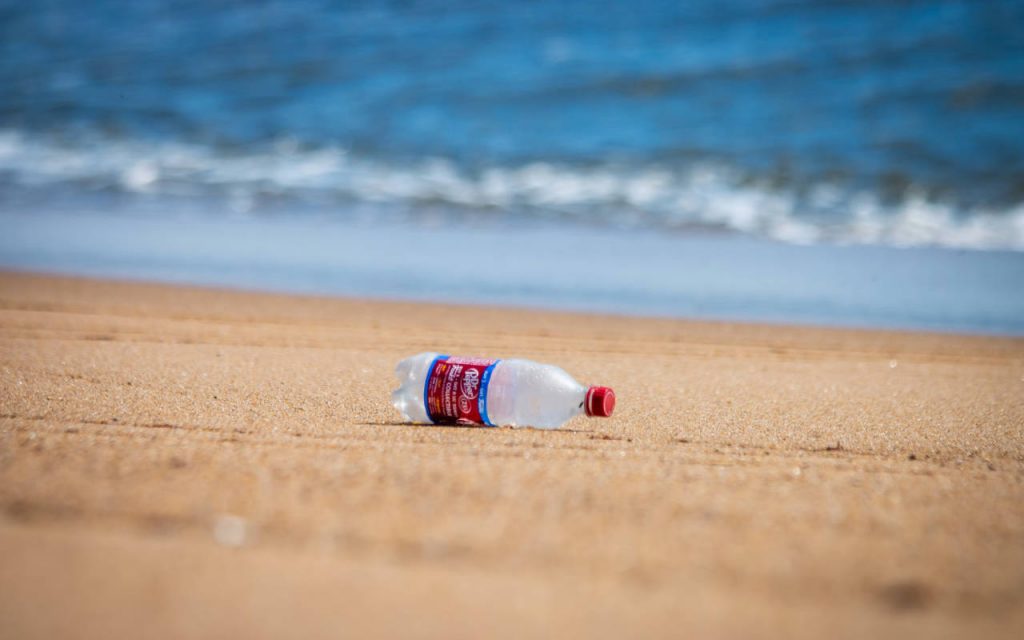We need plastic – our whole world comes to a grinding halt without it.
Without it, we’d have to resort to far more destructive, polluting, and dangerous means of packaging the items we use everyday.
Read more: What would happen if plastic was banned?
Seemingly healthy, “natural” packaging products carry some pretty horrifying environmental consequences.
Paper, for example, is one of the dirtiest and most environmentally destructive industries in the world. And we’re not just talking about deforestation. The manufacturing process is so poisonous that cancer risk is elevated for paper mill workers and people who live close to paper mills, with “significantly elevated mortality from all causes, all cancers, heart disease, lymphomas, and brain cancers”.
That’s an unacceptable toll for a single use packaging product. Biodegradable isn’t much of an advantage if it’s deadly to make the product in the first place.
On balance, plastic packaging is the least-worst solution that we have for making the world go around. But we can’t exactly sit here and claim that plastic is a problem-free material with no side effects whatsoever. There is a problem with plastic, and the way it has infiltrated our ecosystems and our bodies is worrying. And scientists, businesses, and individuals are all wondering how to solve plastic pollution.
So far, most of the solutions we have are short-term.

Recycle, reuse, repurpose…
The best we can do right now to control plastic pollution is to recycle spent material, reuse what’s still good, and repurpose items for medium-term use.
Recycling is a challenge. Not all plastics can be recycled, and sadly, much of what you put in your recycling goes to landfill. Sorting is hard, and finding buyers for used plastics is tricky, with so many restrictions on where recycled material can be used. The Plastic Packaging Tax might help change that demand – but recycling can only be done so many times before the material degrades. Eventually, we can’t recycle plastic anymore.
Read more: Every Plastic That Can (And Can’t) Be Recycled In The UK
That leaves reusing and repurposing. Reusing plastic is a great call, and we should all be doing it. Water bottles have countless uses in them before they’re no good, and can be used to store just about any liquid (or even screws and nails). The polythene bags you get from shops are reusable a good number of times before they start notching or breaking – and they even make for good makeshift bin liners in a pinch.
Repurposing plastics is even better. With a craft knife and a bit of glue, old plastic packaging can be transformed into tools, toys, or anything else your imagination can stretch to.
And while these are all great ways of using old plastic packaging – they simply delay the inevitable. So what happens when the plastic isn’t useful anymore?
End of life plastics, or just the beginning?
Spent plastic packaging material can be turned into long-term building material. For instance, bricks, car parts, roads – these can all be made with end-of-life plastic.
Even big brands are starting to do it. In 2021, Lego revealed the first recycled Lego brick – the culmination of years of research, and the work of hundreds of people working to turn recycled PET bottles into its flagship product. But it doesn’t have to be that complicated.
Some companies (like ByFusion) are compacting end-of-life plastics in moulds to create crude-looking, but super effective building bricks. The result is a strong, light, insulating and long-lasting building material that can be used for just about anything a normal brick could be used for.
There are many long-term options for end-of-life plastics – but there’s always going to be some waste that won’t make it into a long-life material. So, could we burn it for energy?
Yes, plastic can become energy: but it’s a dirty fuel
Plastic contains the same amount of energy per kilo as premium fuel – so incinerating plastic could produce energy equal to that of natural gas, alleviating our reliance on raw fossil fuels.
The problem is that burning plastic produces some wildly toxic gases.
There is a solution to this: pyrolytic gasification. This process, developed by Professor Yiannis Levendis and Chuanwei Zhuo, a doctoral candidate, heats plastic to 800ºC in an oxygen-free reactor to prevent combustion. This turns the plastic into a gas, which can then be mixed with air and burned as cleanly as natural gas.
This is a big step towards clean power generation using waste plastic, but the net benefit is reduced – because power is needed to heat the plastic in the first place.
We’re so close, on so many frontiers, to solving the plastic pollution problem. The future of plastic disposal could be cheap, clean energy, or homes built of plastic bricks. It could even be plastic that breaks itself down into inert materials – or biological organisms that eat plastic.
But until then, we remain committed to making the most of the materials we have – by recycling, reusing and reducing waste wherever we can.
Working together to solve plastic pollution
Let’s make the most of the materials we have, and reduce plastic waste. Move your business over to high quality, customisable recycled plastic packaging, from NPF Packaging.
Get a quote now, or call us on 01773 820415.


